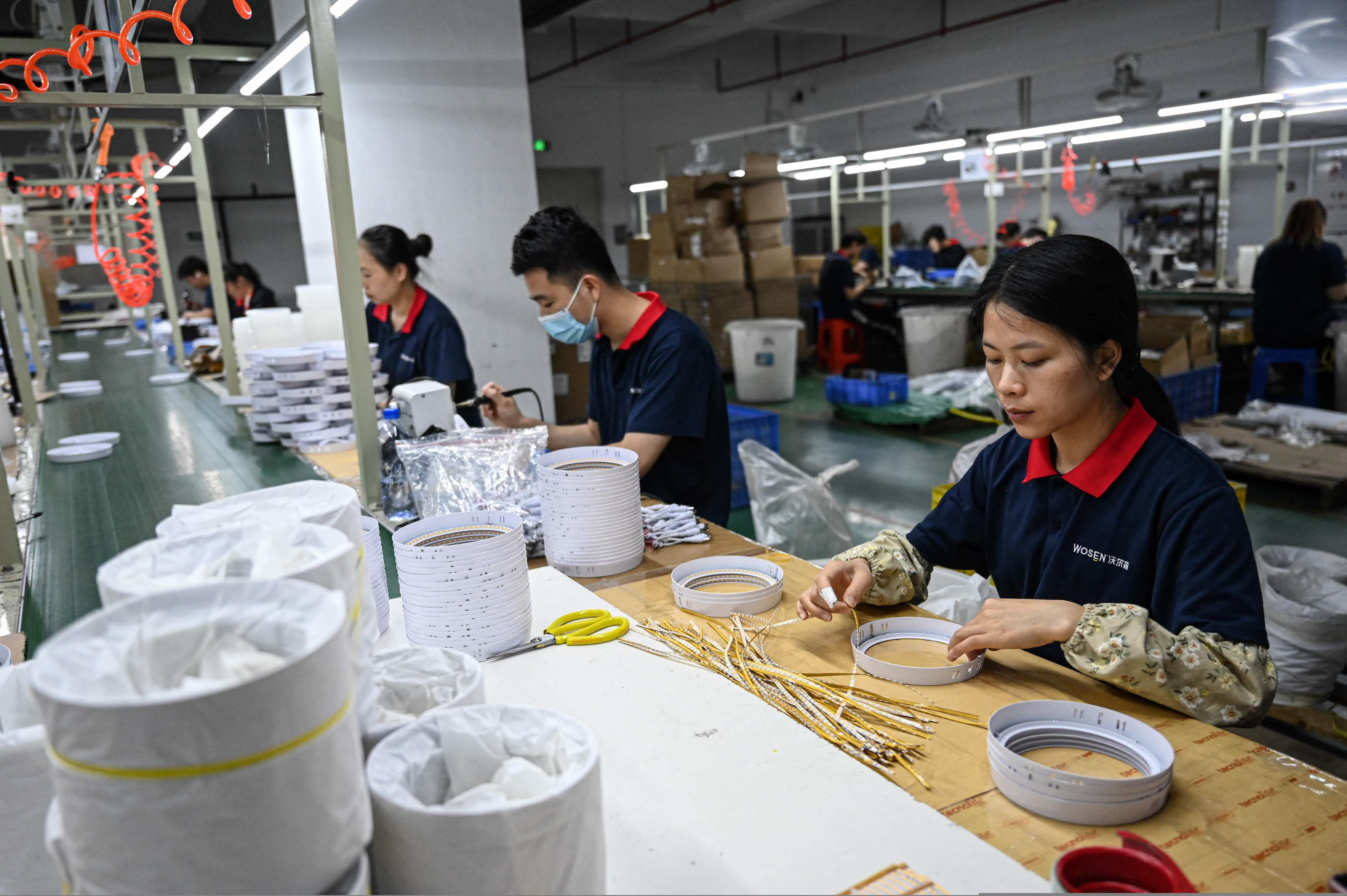China’s Exporters Face Domestic Challenges Amid Intensifying Trade War, Low Demand

Since the US began rolling out multiple rounds of tariffs on Chinese goods earlier this month, Beijing has urged exporters to pivot to the domestic market. But for Li, a bicycle manufacturer with a long-term exclusive focus on American buyers, the shift has been anything but smooth.
She signed up for an initiative on JD.com, one of China’s largest e-commerce platforms. The company promised to funnel 200 billion yuan (US$27.41 billion) to help exporters transition to domestic sales. But days later, her application still hadn’t been processed.
“We reached out to JD to open a store, but they told us the policy only applied to merchants already running self-operated shops,” she said. “Customer service hadn’t even heard of any special support measures for export companies like us.”
The core issue, Li explained, is that most Chinese exporters are contract manufacturers. They produce goods for overseas brands, but do not own the rights to sell them locally.
“Our bikes are branded with our clients’ logos. Selling them in China would violate trademark laws,” she said. “We do not have our own brand, so we can’t even get approved. But we do hundreds of millions of yuan in exports every year. Isn’t that worth something?”
Before US President Donald Trump raised tariffs on Chinese goods to a cumulative 245 per cent under his so-called “reciprocal tariff” policy, Beijing had already started preparing its exporters for the shift.
In addition to retaliatory tariffs of up to 125 per cent on American imports, authorities have rolled out support – through expos, subsidies and e-commerce channels.
Platforms like JD.com, grocery app Freshippo and retail giants including Yonghui Superstores have since launched domestic sale sections specifically for goods previously intended for export.
At a forum in Beijing on Thursday on easing cross-border trade, China’s Vice-Premier He Lifeng called for swift action nationwide to support exporters navigating a more challenging global environment.
“We must confront head-on the new challenges posed by the recent US tariff hikes,” He said. “It’s crucial that we foster new growth drivers in foreign trade and energise the sector through a better business environment at our ports – to withstand external shocks and keep growth steady.”
In March, China’s Ministry of Commerce said Beijing’s efforts are not just short-term fixes, but part of a long-term strategy to bring high-quality products to local consumers.
But many exporters warn that the domestic market is a tough fit.
“Export bikes are built with high specs and cost more to make,” Li said. “Even if we sell at a loss, they’re still too expensive for most people here.”
She added that export goods are often subject to stricter compliance and quality standards, making it harder to compete with lower-priced local products.
Zhao, who runs a factory in Qingdao, Shandong province that manufactures Western-style kitchen equipment for well-known American brands, faces the same challenges.
“We’ve thought about selling at home, but our products just do not fit the local market. Western cooking isn’t that common here,” she said. Like many exporters, Zhao’s business is based on contract manufacturing and lacks a consumer-facing brand, which keeps her off most e-commerce platforms.
“The tariffs have hit us hard. After the US announced them, about 30 per cent of our American clients cancelled orders,” Zhao said. Her factory has served the US market since 2000, and last year generated around 120 million yuan in revenue, with profit margins of about 10 per cent.
On JD.com, listings labelled “originally for export to the US” now include everything from kitchenware and apparel to blood pressure monitors and printers, with prices ranging from 4 to 4,000 yuan. Meanwhile, local governments in Guangdong and Sichuan have launched trade fairs to help exporters sell locally.
In 2024, exports to the US totalled US$524.7 billion, 8 per cent of China’s total retail sales of 48.8 trillion yuan. State broadcaster CCTV called the domestic market “a reliable safety net” for exporters, highlighting that it is more than ten times larger than the US-bound export market.
But size isn’t everything, exporters said.
Zhou, who runs a textile factory in Ningbo, Zhejiang province, has made bedding and curtains for US clients since 2014. Her products simply do not align with consumer preferences in the Chinese market.
“Bedding sizes and curtain measurements are totally different. And our clients mostly use polyester, but Chinese buyers want cotton,” she said. “Even if we get a sales channel, we can’t move this inventory.”
While Zhou has diversified into other international markets, the US still accounts for a quarter of her sales. “That’s not a small chunk,” she said. “Domestic sales are not realistic. We’ll just have to wait and see what the US does next.”
Similar concerns were echoed by Xie Cheng, who runs a home textile factory for American clients in Suzhou, Jiangsu province.
“Our inventory volumes are huge. Dumping that domestically would disrupt the market already facing overcapacity issues,” she said. “Even without us, e-commerce has already flooded the market. There’s just no room for more.”


